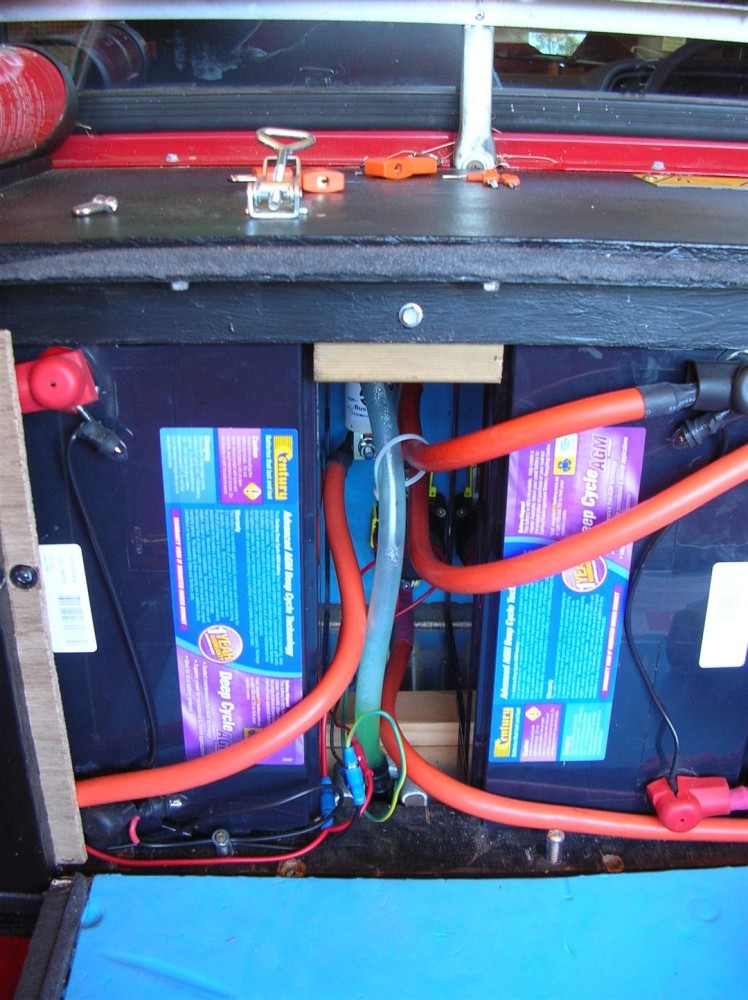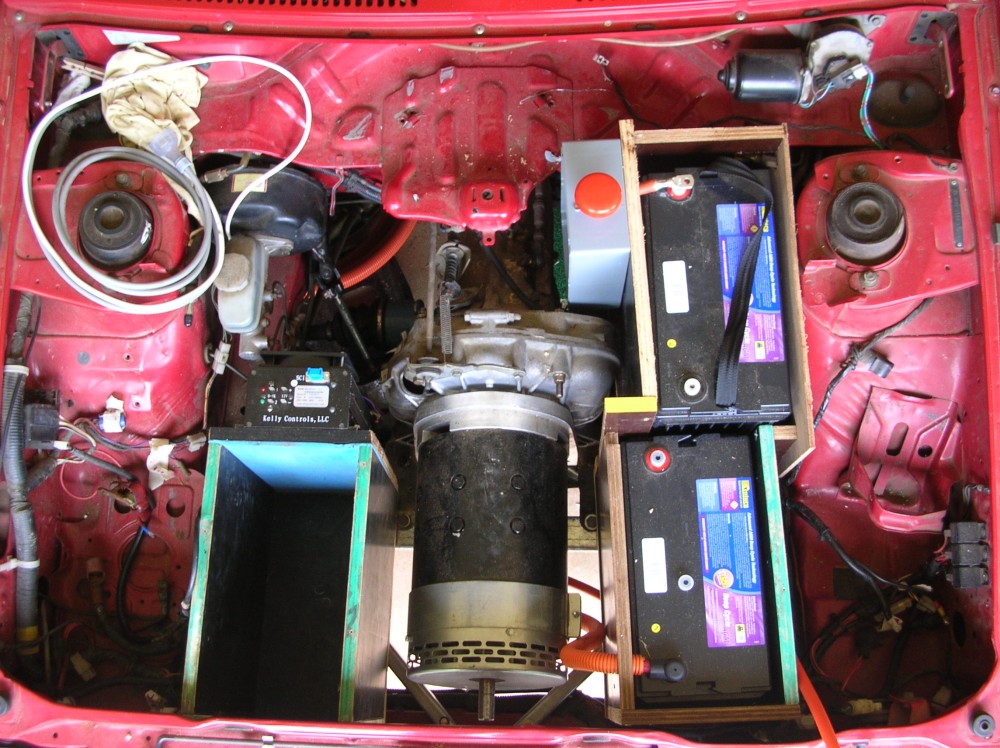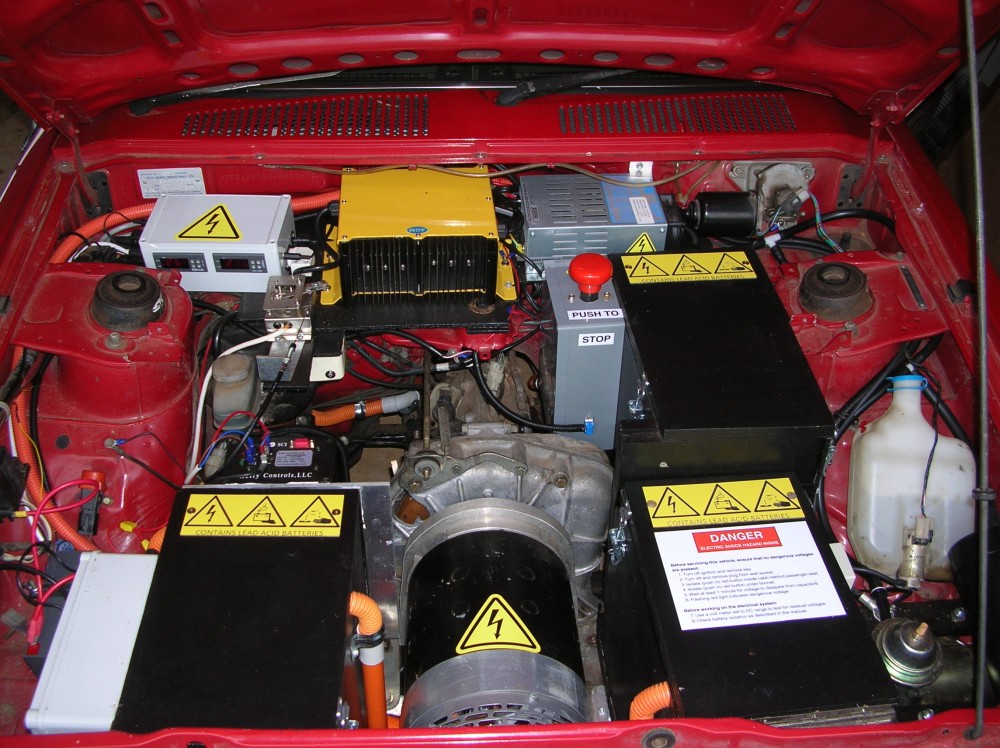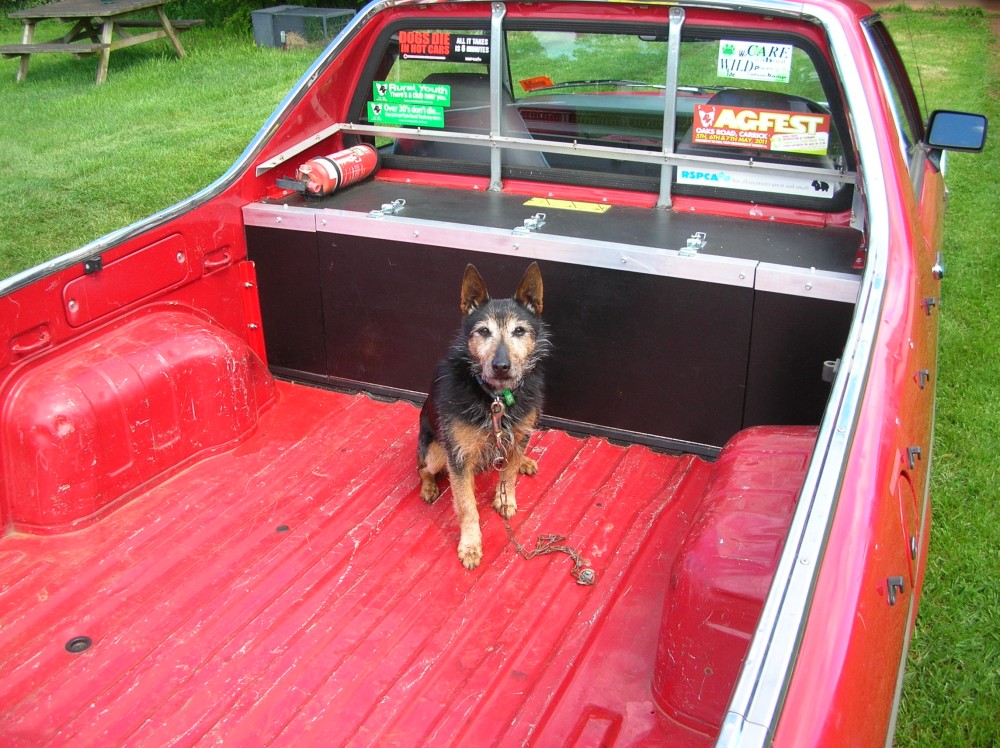In designing an electric vehicle the choice of battery is crucial, it shapes the entire build. This is the story of how I chose my first battery pack for the electric Brumby.
When I first decided to convert my Subaru Brumby to electric I didn’t have a lot of cash to spend. When this is your deciding factor you end up with a large, heavy battery that doesn’t last long. This article will take you through the decisions I made in choosing my first battery pack.
What ‘size’ battery do I need?
How much capacity will get me the distance that I need to go? Before you’ve built your vehicle this can be a difficult question! A good place to start is to see what other people have done. In my case, looking at similar size/weight vehicles on EV Album, I saw that I’d need about 20 kWh of battery capacity to go about 100 km. If you do this yourself, try to resist the temptation to take the best figure you find. Look through lots of vehicles and take an average. I found that some people will estimate the efficiency of their vehicle before it is complete, and they can be wildly optimistic. See if you can identify and exclude such outliers…
Anyway, since I wanted a vehicle that could travel 100 km, I was looking at a 20 kWh battery.
Now that we have a capacity, the next thing to work out is the discharge rate. The original Brumby’s petrol engine developed about 60 kW. It would be a good idea to match or slightly exceed this figure – we don’t want to go backwards with our upgrade! So let’s say 60 kW minimum.
Next up is to decide on a battery voltage. Historically EV conversions used lead-acid batteries, and since lead-acid is available in 12 V batteries, standard voltages are still typically multiples of 12. Common conversion voltages are 48, 96 & 144. These days voltages above 300 V are becoming more common when parts from commercial EVs are used.
I decided on a nominal voltage of 144 V for my battery. This is the most common voltage for conversions, ensuring a reasonably wide range of compatible chargers, motors, controllers, DC/DC converters etc. Note that a 144 V lead-acid battery will be between 178 V (fully charged) and 115 V (completely flat).
My battery requirements therefore were:
Voltage = 144 V nominal (115 – 178 V)
Capacity = 20 kWh (138 Ah)
Maximum discharge rate = 60 kW (416 A).
Lead or Lithium?
There are a couple of advantages of lead-acid over lithium, and a string of disadvantages. In the end I decided on lead-acid because:
- The initial purchase price of lead-acid is cheaper than lithium. The lead-acid is likely to die fairly quickly, making a lithium pack cheaper over time, but I was concentrating on that initial cost.
- Lithium cells require a battery management system (BMS). This adds cost and complexity to the build. I had enough cost and complexity for the time being with everything else in the build!
- A lead-acid battery will probably survive being accidentally flattened completely. It will reduce the lifespan considerably, but it should survive. A lithium battery will not survive this.
My reasoning was that I wanted to get on the road quickly, to see if the Brumby was actually any good as an electric vehicle. I wondered if I’d convert it then regret it. The lead-acid pack looked like the quickest way to get going without spending quite so much money, and a great way to learn. I’d start out with familiar lead-acid batteries, then upgrade to lithium cells once I was happy with the vehicle.

Cell Shopping
This is where the pies in the sky meet the reality of the road.
Back in 2011 I made a table to compare the different offerings of the various brands. Looking at it now I find that I had 57 lines in my spreadsheet! This file is now woefully out of date, but here it is in case anyone wants to see it.
How do we decide if a cell is suitable? Let’s look at the specifications for the Century 12 V battery that I used in the Brumby, the C12-140DA:

- There are six cells in this 12 V battery. This ‘box of cells’ makes connections very easy. 12 of these in series would be 144 V.
- Discharge current is good. Maximum of 1400 A is much higher than the required 416 A.
- The capacity also looks good, as 140 Ah is just above the required 138 Ah.
- 12 of these adds up to 498 kg – they are heavy! But this is (just) within the allowed GVM of the Brumby.
Peukert’s Law – the great disappointment
For lead-acid batteries in EVs we also need to take into account Peukert’s Law. In the capacity row of the specifications it says “140Ah@20hr-rate”. This means that if the battery is discharged over 20 hours, you can get 140 Ah from it. But I won’t be taking 20 hours to drive my 100 km, more like 1.5 hours. Peukert’s Law tells us that lead-acid batteries loose capacity if you discharge them at a higher rate. Sometimes the specifications state capacity at a 1 hour rate, but not in this case. A rough rule of thumb is that you should halve the rated 20 hour capacity to find the capacity for EV use. This means I’d only get about 10 kWh, and only be able to travel about 50 km. Oh well, I can’t fit any more weight, so I suppose this will have to do.
Loading up the Brumby
Fitting the 498 kg of lead-acid was the single largest job in my initial conversion. I was able to fit 7 at the front of the tray on their ends. Using AGM batteries means that they can be placed in any orientation. Using this configuration meant that the rear battery box was reasonably small, neat, and simple. I made the box out of Formply, as I was after something thermally and electrically insulating, and I was familiar working with this strong, cheap material.
I placed another two batteries under the tray, directly under the 7. These two boxes were horrible to make. I had to assemble each box on the ground, place it onto a jack, place the battery inside, then raise the whole kaboodle up into place with the jack. Once installed I never wanted to remove them again! Being under the car they were also just about impossible to photograph.
The final three batteries were placed under the bonnet. This was largely due to the requirement to get the weight distribution right. Too much weight in the back would mean difficulty steering, and would mean I’d have trouble passing inspection. More wooden boxes, positioned to fit the square batteries in the rounded engine bay.

And the Result?
Range was about 50 km for the first few months, gradually dropping off to something like 35 km after 18 months. I measured how much power I put into the battery, and found that it was about 13 kWh after draining completely flat. So Peukert’s Law robbed me of about 35% compared to the C20 value. Efficiency was at best about 26 kWh/100 km, and at worst up to 37 kWh / 100 km.
Acceleration was reasonable, certainly better than the petrol. Handling was like an overloaded 20 year old ute. It did stop better than before though, as in the petrol days the entire vehicle had a habit of spinning around under heavy braking!
The voltage of this battery pack had a tendency to ‘sag’ under load. So much so that the lights would dim if you accelerated hard on the way home at night. I once ran out of juice about 2 km from home, but was able to complete the trip after taking the dog for a walk for 20 minutes. This was enough time for the batteries to recover somewhat.

I decided that the conversion was worth doing, and so started working on my new lithium (LFP) battery soon after getting on the road with lead-acid. This took me about 18 months, by which time the lead-acid was decidedly tired. I managed to sell it for about half the price I paid for it, these large format lead-acid batteries are easy to on-sell as secondhand.
I learned a lot from my lead-acid pack. 500 kg of battery worked ok, but was not great to drive, it really needed to be lighter. The original idea that 20 kWh would get me 100 km was not correct, my vehicle is not that efficient. And I did flatten the battery that day, so I learned how to plan trips with the limited range without completely ruining the battery.
Would I install lead-acid again? No way! But that is because I’m now experienced with lithium cells, and I can quickly build a BMS to suit. If you want to ease yourself into a conversion then you might still consider a lead-acid pack. Just be aware that it will cost more and use a whole lot more of your time in the long run.

Sources of EV Batteries and Cells
https://www.evworks.com.au/ – Good source of general EV components, I purchased much of my build from EV Works. Lately they have been difficult to get a hold of, but it pays to be persistent.
https://www.ev-power.com.au/ – I bought my first lithium battery from EV Power
https://www.elmofo.com.au/lithium-batteries.html
https://www.ozdiyelectricvehicles.com/ – A source of new and secondhand cells. Email them to see what they have.
https://www.lithium-power.com.au/
https://www.sparklithium.com.au/
https://www.facebook.com/groups/502783836944412/ – A Facebook group with a good list of current Australian suppliers